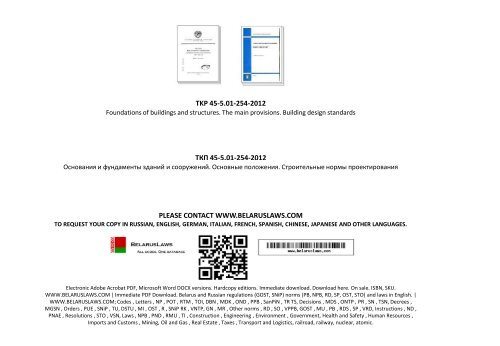Tkp 45 501 254 2012

The skyline of Melbourne in January 2019, as viewed from the., the second-largest city in, is home to approximately 723 completed buildings. Of those completed and or topped-out, 44 buildings are defined as 'skyscrapers' (buildings which reach a height of at least 150 metres (490 ft));. Of the ten tallest buildings in Australia, five are located in Melbourne. Most of Melbourne's tallest skyscrapers are concentrated in the precinct; however, other locations of prominent skyscrapers and tall buildings in Melbourne include,,,,.
Sep 19, 2018 - Typically, therapists provide TKP cues to a client's orofacial structures via direct. The median errors for the AG501 systems are under 0.5 mm [23, 24]. An individual to enhance their motor performance during skill acquisition [43–45]. 254–266, 1995. 112–130, Routledge, London, UK, 2012. 2018-06-01 tkp、京急川崎駅前に「アパホテル〈tkp京急川崎駅前〉」 6月1日 本日開業 2018-06-01 TKP、アパホテル最大のフランチャイジーに 会議と宿泊の融合を実現し、全国に10棟を達成 ~福岡市2棟、東京都内1棟のホテルについても、アパホテルとの.
Geographically, Melbourne's central business district comprises a western skyline and an eastern skyline. Buildings are more densely packed in the west than the east, although the east has two of the city's tallest buildings to architectural feature— and, respectively, whilst the (located on the west side) is tallest by roof. As a whole, the city overtook in 2011 as having the tallest skyline in the country and the 24th–tallest in the world, when the heights of the top ten tallest buildings in the city are combined. Historically, Melbourne has represented several 'firsts' and been the holder of various records, both in Australia and internationally.
The city is notable for being one of the first cities in the world to build numerous tall office buildings, alongside and in the United States, though Melbourne's first skyscraper boom was very short lived. Melbourne was the location for Australia's first high–rise, the, constructed during this boom in 1889. Melbourne was also the location for the first modern post-WW2 high-rise, built in 1958.
From 1986 to 2005, three of Melbourne's skyscrapers held the title of tallest building in Australia, with the Rialto Towers (1986–91), 101 Collins Street (1991) and 120 Collins Street (1991–2005). Since 2006, the city has been home to the second-tallest building in the country, the; surpassed only by the 's, the Eureka Tower still maintains the title of tallest building in Australia to roof. Several other skyscraper projects have since emerged, such as —which when completed in 2020, will surpass the Eureka Tower in height, and become the tallest building in Australia to roof.
Further information: 19th century The late 1880s 'land boom' saw the construction of approximately a dozen 'lofty edifices' of 8 to 10 storeys, made possible by the introduction of a pressurised to operate lifts, and taking load bearing brickwork to great heights. The (Australian Building) at 12 storeys plus spire, was by far the tallest, and can claim to be Australia's first 'skyscraper' and amongst the tallest building in the world when completed in 1889. Aside from the APA Building, a total of 11 'skyscrapers' were located in the Melbourne city centre during this period, including the Finks Building and the Prell's Building. Many of the high-rises of this era were constructed in a or, which led to the comment that Melbourne had become a 'Queen Anne Chicago'.
None of them, however, were preserved and most were torn down between the 1960s and early 70s. Melbourne's skyline from the Yarra River in 1934.
20th century Melbourne was the first city in Australia to undergo a post-war high-rise boom beginning in the late 1950s, though in the following decades built more, with over 50 high-rise buildings constructed between the 1970s–90s. Eyebeam license key. In 1972, (formerly BHP House) became Melbourne's first skyscraper to surpass the height of 150 metres. The William Street building was the city's tallest for a few years, and remains one of the few heritage registered skyscrapers in Melbourne. Slightly taller, the was completed in 1975; and then in 1977 was crowned the tallest building in Melbourne, at a height of 182 metres. In 1978, what would be the first of two towers was opened, at a height of 188 metres.
Of 150m+ completions Total 1970s 5 5 1980s 3 8 1990s 9 17 2000s 8 25 2010s complete: 18 50 under-construction: 7 2020s complete: 0 63 under-construction: 13 By the early 1980s, Melbourne had a total of 6 buildings above 150 metres, with the completion of the Regent (later Sofitel) Hotel at in 1980. In 1986, the surpassed Sydney's as the tallest building not only in Australia but in the, with a height of 251 metres. At the time of its opening it was the.

The 1990s brought Melbourne another 9 buildings over 150 metres; 5 of which exceed heights of 200 metres. Specifically, 1991 saw the construction of the 260-metre-tall (850 ft), which was crowned the tallest building in Australia and the Southern Hemisphere; it was surpassed in height later that year with the completion of the nearby. The skyscraper, which stands at 265 metres in height, held the titles for tallest building in Australia and the Southern Hemisphere for fourteen years, until the completion of the 's in 2005. 21st century During the 2000s, over 20 high-rise structures were completed, including the, which overtook 120 Collins Street as the tallest building in Melbourne, and further became the second-tallest in Australia (although tallest to its roof). Eureka Tower was also the tallest residential building in the world, until surpassed by and the in.